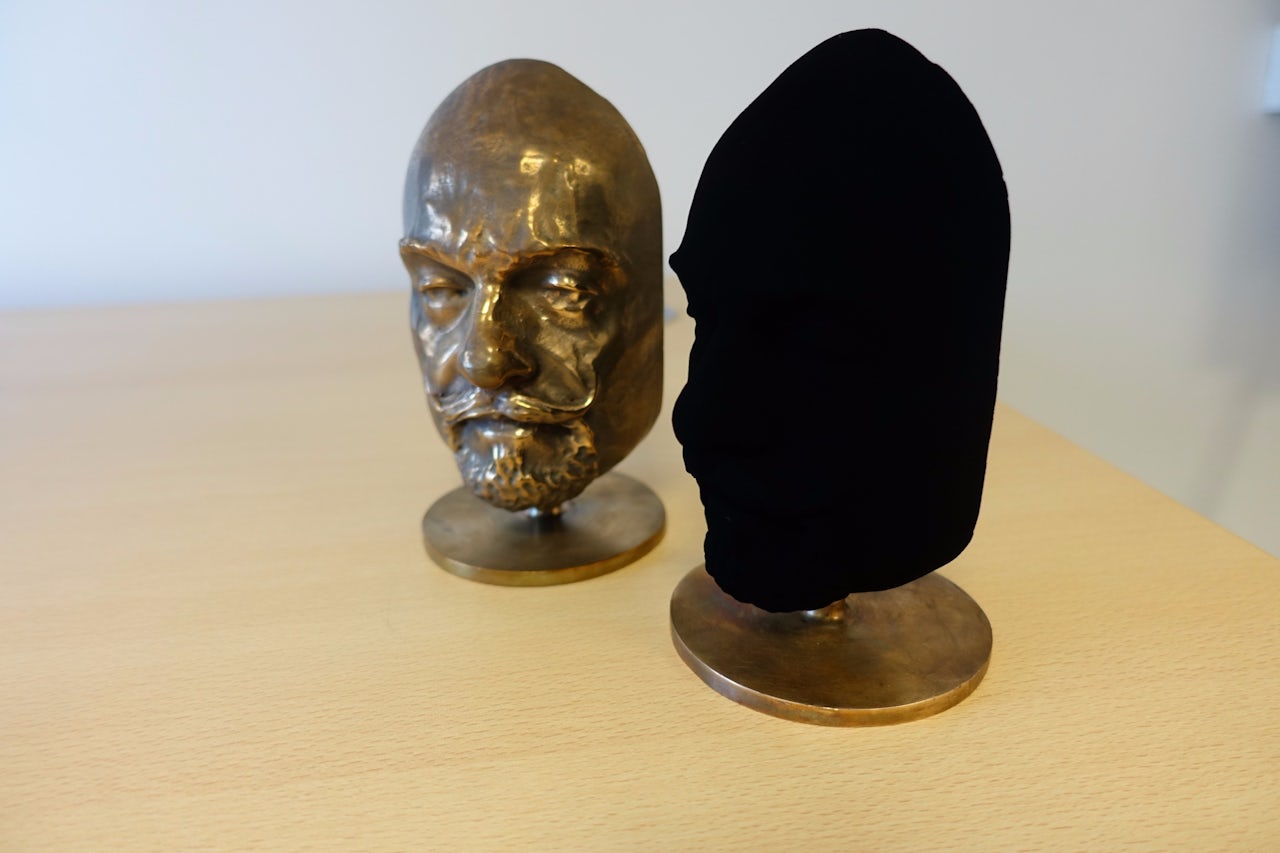It was February, and the art world was outraged. The exclusive artistic rights to Vantablack, the blackest material created by man — a gorgeous, velvety black hole of carbon, called "sexy" and “eerie” and “dynamite” by artists and critics — had been granted to the British sculptor Anish Kapoor. “We should be able to use it,” the artist Christian Furr whined to the Daily Mail. “It isn’t right that it belongs to one man.”
The outrage was based on a slew of misconceptions: one, that Kapoor had exclusive rights to the material, period — he doesn’t, only to one version of it and only in the field of art — two, that it’s a pigment — it isn’t — and three, that the material was ready to be used, which Kapoor himself has raised doubts about.
In September, the artist told The Guardian and The New York Observer that the creation of Vantablack in a form suitable for his art was still ongoing, a "collaboration" with its maker, Surrey NanoSystems. “We’ve got work to do,” he told The Observer.
That might explain why it’s been almost a year and Kapoor has yet to debut a piece that uses the sexy, eerie, dynamite stuff.
Back to the misconceptions. Vantablack is not a pigment. It isn’t a paint. It’s not even a color. The better word for it would be coating. Things become Vantablack-black through a process called chemical vapor deposition that first coats a substrate, then applies heat and pressure for hundreds of hours, forcing carbon to bond into structures called nanotubes. The resulting "forest" of nanotubes traps 99.965 percent of light when the light source is directly perpendicular to it, making the object appear deeply black.
Ben Jensen, the CTO of Surrey NanoSystems, described carbon nanotubes in 2014 to The New York Times:
“Imagine a drinking straw, closed at one end, with a wall one-atom thick. This straw is one-ten-thousandth the diameter of a human hair, but it is 10 times stronger than steel, and 10 times better at conducting heat than copper… Vantablack packs billions of these straws together.”
In March, Vantablack announced a more accessible but slightly less black version of its material: Vantablack S-VIS, which traps 99.8 percent of light. This is what Kapoor will be using. The company calls it "paint" because “it’s effectively sprayed on,” Jensen told The Outline, but it still needs to be applied in a vacuum chamber, treated with additional chemicals, and heated.
This all means that any Vantablack art would have to fit inside a vacuum chamber — which many of Kapoor’s best-known pieces wouldn’t — and be able to withstand temperatures of around 100 degrees celsius. The resulting product also can’t be touched, because the nanotubes could be knocked off.
Presumably these are some of the limitations Kapoor, who declined to comment, is working on with Surrey. In the meantime, Surrey has turned down a deluge of requests for Vantablack. One famous comedian (whom Jensen declined to name) asked to have his McLaren coated in Vantablack. Middle Eastern oil barons have inquired about Vantablack-covered dice, with plans to use diamonds for the pips.
Surrey did, however, agree to partner with men’s grooming brand Lynx, coating a single deodorant bottle in the material for an ad and pop-up store promoting its new product, Lynx Black. The deodorant bottle took four months. The company also coated a bronze bust of BBC presenter Marty Jopson.
Jensen is frustrated that some people still think of Vantablack as a paint that can be squeezed from a tube and onto a canvas. "Most of the criticism has been from people who really have no idea what the material is and haven’t bothered to ask," he said.
Vantablack was unseated as the darkest manmade material.
Jensen emphasized that Surrey NanoSystems remains mostly focused on its core clients: science and tech companies. However, Surrey’s researchers are developing two new types of Vantablack "paint," neither of which involve nanotubes. The first type is slightly darker and must be applied in the lab. The second type will be a product that consumers can apply themselves, estimated for release in spring 2017.
These new versions still won’t be able to cover a car, but they could be used for architectural purposes like lighting effects. They will still only be usable indoors and will absorb 99.8 percent of light.
Despite the outcry over one artist’s ostensible monopoly on the "blackest black," Vantablack was unseated as the darkest manmade material in the Guinness Book of World Records back in October 2015. That honor now belongs to a substance called “dark chamaleon dimers” that is thinner than Vantablack and reflects less light at more angles. “An ideal material that absorbs 100 percent of light is referred to as ‘black body’; to date, ‘dark chamaleon dimers’ comes closest to being a perfect black body,” Guinness wrote. In other words: We’re not quite there. The quest continues.


